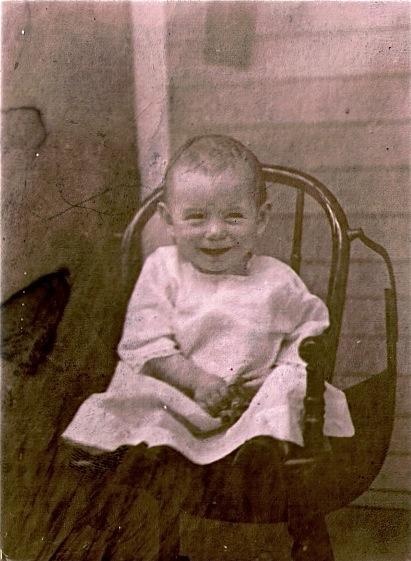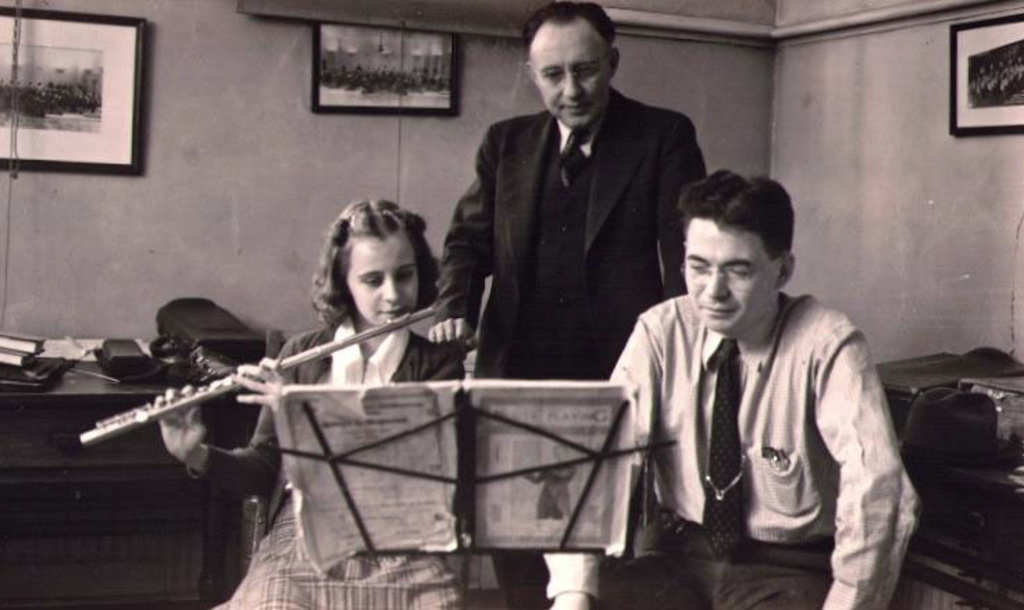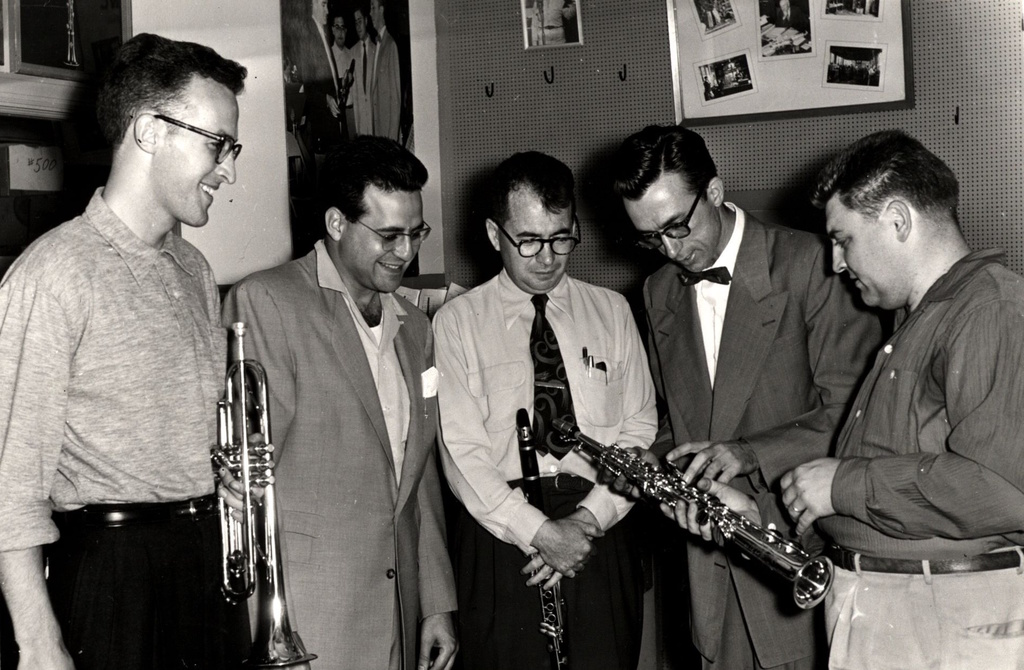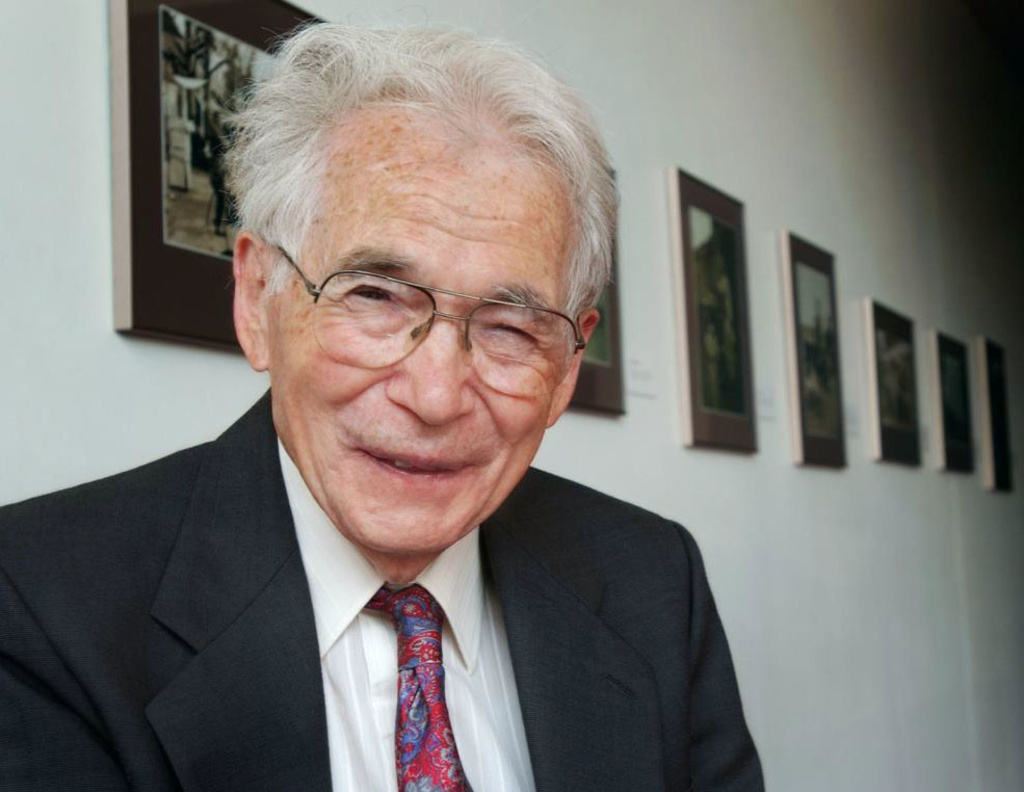The new University of Iowa Voxman Music Building will be dedicated Friday, Oct. 21, and, like its predecessor damaged in the 2008 flood, will honor the legacy of Himie Voxman and his contributions to the study of music.
Voxman taught at the UI School of Music for 45 of the 110 years it has existed. He served as the school’s director for 26 years until he retired in 1980 and is credited with establishing the school’s national prominence. Through his work accrediting schools of music across the country, as well as the ubiquity of his music instruction books, he continues to influence music education at the UI and across the country even years after his death.
Voxman’s early years
Little about Voxman’s early life suggested he would build a career in music. He was born in 1912 in Centerville, Iowa, in a home that had neither an indoor toilet nor electricity. He was the fourth child of Jewish immigrants fleeing anti-Semitism in what is now northern Ukraine. In his unpublished autobiography, he describes his family as “fine people mostly ‘living lives of quiet desperation.’”

A precocious, curious, and active child, Voxman excelled in school and read voraciously. By his sophomore year at Centerville High School, he had taken and passed every course available, had substituted for other teachers, and had taught a course of his own.
Voxman was the only member of his family to go to college. In 1929, he was offered enrollment at both Iowa State University (then known as Iowa State College) and the UI (then known as the State University of Iowa). Like many students today, Voxman couldn’t afford tuition without a part-time job. He chose the UI because he preferred its offer of an evening job washing dishes at Quadrangle Hall to a job feeding mice at ISU at 6:30 a.m.
“I thought that was too early to get up,” Voxman told music journal The Clarinet in 2008.
Income from dishwashing was not enough, and while studying chemical engineering at the UI, Voxman taught clarinet. He also played in the UI Band and Symphony Orchestra and occasionally performed at other functions. One such gig introduced him to then-Dean of the Graduate College Carl Seashore, who would have a profound influence on Voxman’s career.
Read more about Himie Voxman’s childhood.
When Voxman graduated in 1933, he could only find work teaching music at the Iowa City public schools. Seashore, a leader in the field of the psychology of music and after whom Seashore Hall is named, helped Voxman secure work as a research assistant at the UI, which led to Voxman earning an MA in the psychology of music and the beginning of a PhD in the same field.
However, Seashore observed that Voxman’s music teaching was progressing better than his research pursuits and recommended to Voxman that he focus solely on music. Voxman followed this advice, began teaching woodwind instruments at the UI, and left his PhD unfinished. He was reportedly astonished that two years after graduating with a BS in chemical engineering, he’d launched a career focused on music instead of science.

Voxman’s UI career
Since his childhood, Voxman had maintained contact with William Gower Sr., his first clarinet teacher, and they worked together in Voxman’s new position to teach courses in music pedagogy, beginning the UI’s status as a music teacher–training institution.
By the time of Voxman’s retirement, he estimated that 100 to 150 UI School of Music graduates were heads of various departments and schools of music across the nation, such as Yale University, Columbia University, and the University of California, Berkeley. Voxman guessed that the only other school with higher placement numbers was the Eastman School of Music.
In 1937, Gower and Voxman published Gower and Voxman Modern Method, which they designed to improve upon the shortcomings of what was then the standard woodwind instructional text, one written by Hyacinthe Klosé more than 50 years before.
After the popularity of their first book, they wrote Advanced Method for Clarinet, which also enjoyed marked success. Together with Modern Method, Voxman and Gower’s books became the new industry standards. Their publisher encouraged them to produce more books, and by the time Voxman headed what was then called the Music Department in 1954, he and Gower had co-authored at least 30 publications for wind instruments.
The estimated sales of the Gower–Voxman books is more than 10 million to date. William Voxman, one of Himie Voxman’s two sons, says his father’s books are so widely used that years ago, while working on a kibbutz in Israel, he heard a student playing the clarinet and upon investigating, discovered that the student was using one of his father’s texts.
Voxman also contributed to music literature with many collections of rare and sometimes thought-to-be-lost scores of music he acquired during 16 trips to Europe, visiting no fewer than 15 countries. He told Iowa Bandmaster magazine in 1988, “It is an exciting thing to get your hands on something that no one has examined or performed for 200 years!”

Voxman visited libraries, private collections, castles, and monasteries across Europe and found an uncounted number of music scores, books, and microfilms that he channeled to publishers, graduate students, and libraries, particularly the Rita Benton Music Library at the UI, to which he donated 883 books in 2007 alone.
In 1954, Voxman became head of the music department at the UI without a degree in music, a highly unusual arrangement. During his 26-year tenure, he directed the restart of the Iowa Summer Music Camp; helped found the Center for New Music, modeled after the Iowa Writers’ Workshop; oversaw the establishment of the Electronic Music Studio and the undergraduate Music Therapy program; secured funding for a new music building to serve burgeoning enrollment; and drafted the National Endowment for the Arts application (and sat on the planning committee) for the original Hancher Auditorium.
The flood of 2008 affected more than 2.5 million square feet of building space at the UI (the equivalent of one-sixth of the campus), forced the evacuation and closing of 20 buildings, and resulted in $743 million in damage and recovery costs.
This fall marks completion of three major construction projects affiliated with recovery efforts—the Art Building replacement, Voxman Music Building, and Hancher Auditorium. The UI Museum of Art replacement is the final flood recovery project. Officials hope that building will open in 2019.
Beyond his inestimable influence on music education, Voxman sat on the first Iowa Arts Council and was appointed by the U.S. State Department to serve on the committee that auditioned academic groups for goodwill European tours. He served as an officer and head of both the National Association of Schools of Music and the Commission on Graduate Studies, where he helped establish national higher education music standards. He received the UI Distinguished Alumni Award, the Lifetime Achievement award from the International Clarinet Association, and an Honorary Doctorate of Humane Letters from the UI. The Himie Voxman Scholarship Fund supports two to three students per year.
Voxman died in 2011 in Iowa City at the age of 99. He’d published his last book at 93. At 95, he was still teaching music lessons. Those who knew him remember an intelligent, curious, refreshingly sincere, understated, and active man.
“He had a serious, thoughtful manner, but also a twinkle in his eye,” says Robert Glidden, former student and colleague, UI alumnus, former music dean and provost at Florida State University, and president emeritus of Ohio University. “Himie was like a second father to me.”
Mark Kelly, director of bands emeritus at Bowling Green State University, former Centerville band director, and student of Voxman, says, “He was a singular self-made man you did not want to disappoint.”
Eugene Rousseau, the renowned classical saxophonist and former colleague, says, “He was a man of few words, but they carried weight. He said what he meant and he meant what he said.”
Recently, Voxman’s son William found among his father’s papers several pages filled with quotes from various sources that had been hand copied. William posted some of them on his refrigerator to remember his father and the words that “must have struck his fancy.”
One reads, “From time to time, step out of your frame and look back at your picture.”

Editor’s note: The University of Iowa will celebrate the grand opening of the new Voxman Music Building on Friday, Oct. 21. For details about the events, visit inspire.uiowa.edu.